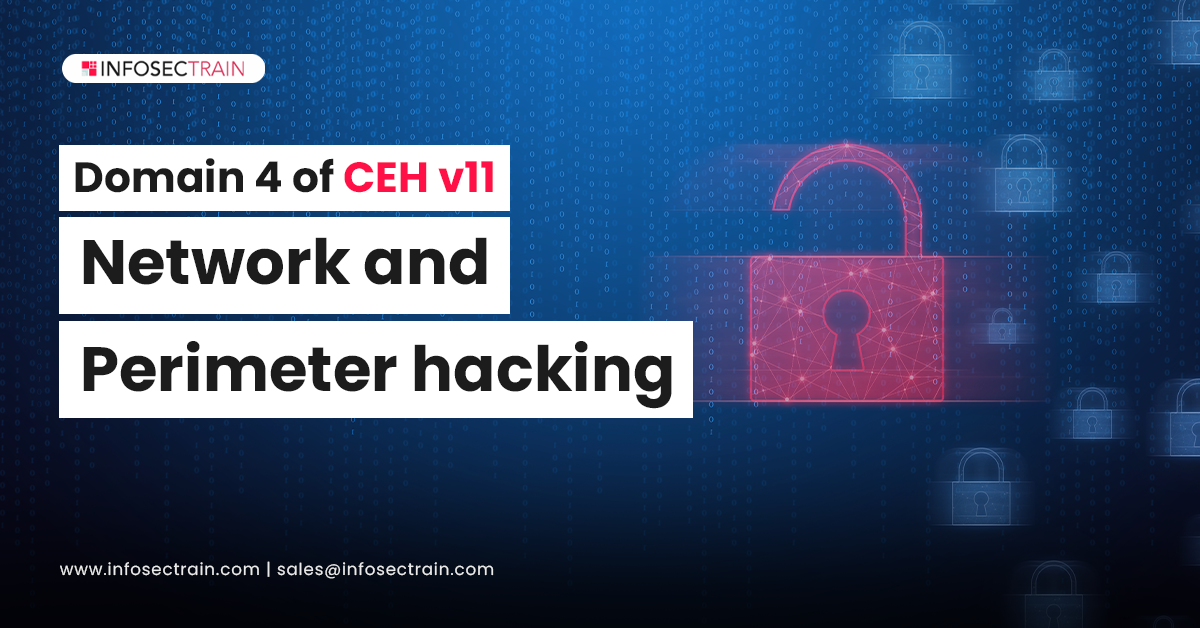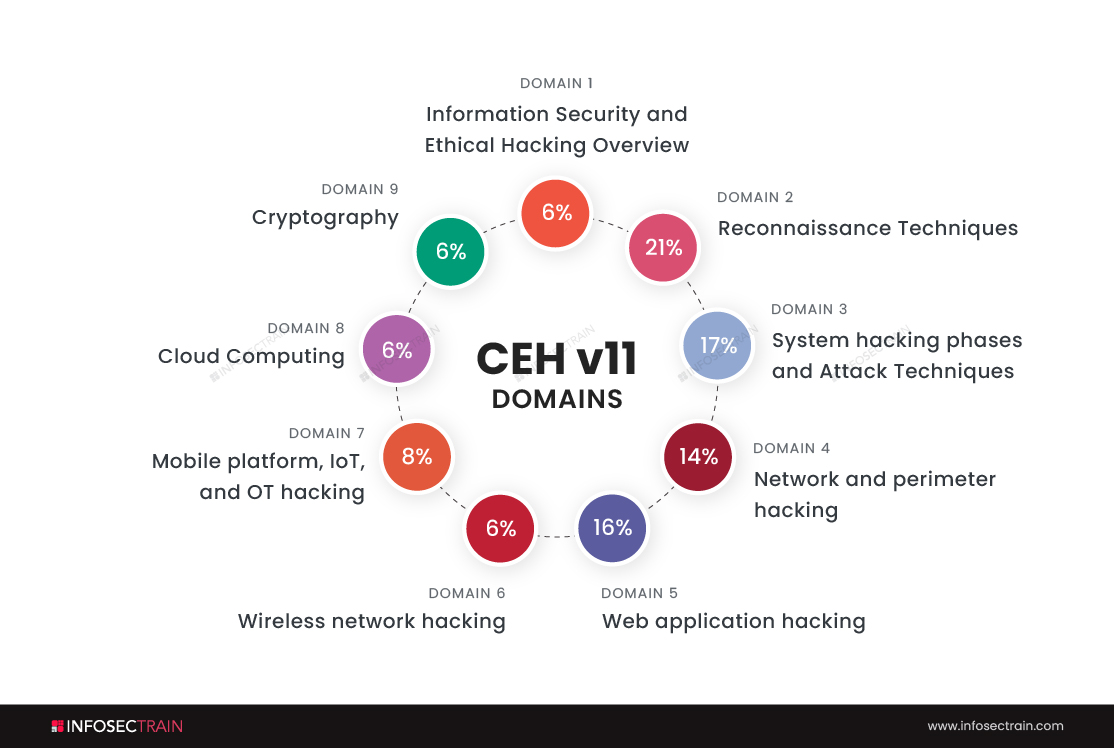Domain 4 of CEH V11: Network and Perimeter Hacking

Domains of CEH
- Information Security and Ethical Hacking Overview-6%
- Reconnaissance Techniques-21%
- System hacking phases and Attack Techniques-17%
- Network and perimeter hacking-14%
- Web application hacking-16%
- Wireless network hacking-6%
- Mobile platform, IoT, and OT hacking-8%
- Cloud Computing-6%
- Cryptography-6%

We will discuss the fourth domain of CEH, which is ‘Network and perimeter hacking’.
Network
Networks are composed of two or more computers that share resources (such as printers and CDs), exchange files, and allow electronic communications. A network of computers may be connected by cables, telephone lines, radio waves, satellites, or infrared beams.
In simple terms, a network is a cluster of devices connected to each other by a physical communication medium.
What is network hacking?
As I have mentioned above, a network is a collection of devices. Hence, network hacking is nothing but gaining access to the information present on all network devices over the internet.
How are networks compromised?
As every big plan starts with a simple step, likewise, large-scale cyber attacks also start by attacking or infecting a lower-end device and increasing the level of privileges required to go forward inside the same network. While attacking the networks, ethical hackers will have to think exactly like malicious hackers. Only then the organizations can have a clear idea of their security vulnerabilities.
Attackers first start with the traditional methods. One of the most common traditional methods is sending a false email. An attacker usually creates an incorrect email by replicating it like an original one. For example, an attacker can create an Amazon Big Billion day email asking you to click the links to get the 50% offer. Once you click on the link, you’ll be redirected to a malicious webpage from where an attacker can install the viruses on your network’s device.
Once the attacker enters your network, he will start escalating his privileges to the administrator level because they are the ones who maintain the whole network.
In simple terms, privilege escalation can be described as exploiting a bug or vulnerability in an application or operating system to gain access to resources that would otherwise be protected from an average user.
Tools used for network perimeter hacking
ARP Scan: ARP-Scan is used to scan internal networks. Compared to netdiscover arp-scanning, it is much faster. With the assistance of the ARP Scan tool, you can collect data about the internal networks in a noisy way. By noisy, I mean that the tool will be caught by the IDS and IPS sensors and leave traces behind.
The four general ARP Scan usage scenarios are:
- We can identify all the IPv4 network devices.
- We can identify the false IP addresses.
- We can easily identify and map IP addresses to MAC addresses.
- We can locate and isolate malicious devices.
PivotSuite: With PivotSuite, penetration testers and red teams can move around inside a network by using compromised systems. It is portable, platform-independent, and powerful. It is a stand-alone application that can be used as a client or a server.
Nmap: Nmap is a port scanner. Port scanning is a phase where hackers scan the target system for data like live systems, open ports, and different services running over the host.
In addition to port scanning, Nmap can identify various operating systems, version numbers of services running, firewall configuration, and many more features.
Network attack techniques
Spoofing: In network security, a spoofing attack is a scenario in which an individual successfully pretends as another data source, thereby gaining an illegitimate advantage.
For example, an attacker can buy advertising space on any site and can post some exciting advertisements that attract users to click on them. And if the user clicks on that advertisement, he will be redirected to a malicious page from where an attacker can install the viruses into the user’s system.
Sniffing: An attacker can capture data while it is cycling across an insecure network by using packet sniffing. Data on travel is generally captured by sniffer software running on any network layer. Putting the sniffer at an aggregation point would allow it to observe the entire traffic.
Phishing: While the spelling is Phishing, we utter it as fishing. They are not just phonetic but also somewhat comparable, since we use a worm to capture a fish known as fishing. On the contrary, an attacker can email, send a message, a web link, or a voice call to seek our private data called “phishing.”
The main aim of phishing attackers is to steal your sensitive and personal data like login credentials, credit card information, etc. They may also try to install malware on your system.
CEH with InfosecTrain
InfosecTrain is one of the leading training providers with a pocket-friendly budget. We invite you to join us for an unforgettable journey with industry experts to gain a better understanding of the Certified Ethical Hacker course. Courses can be taken as live instructor-led sessions or as self-paced courses, allowing you to complete your training journey at your convenience.







 1800-843-7890 (India)
1800-843-7890 (India) 
